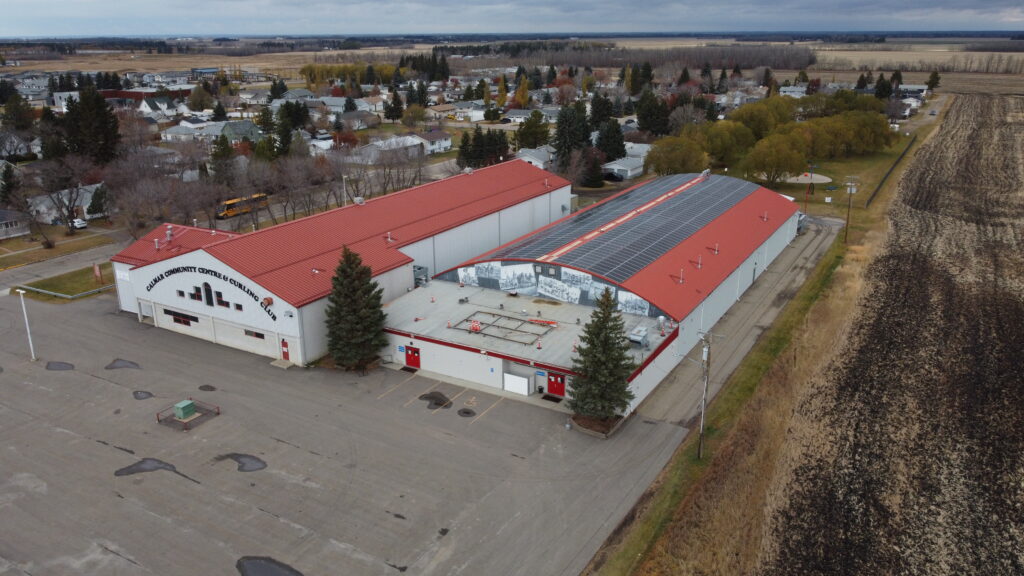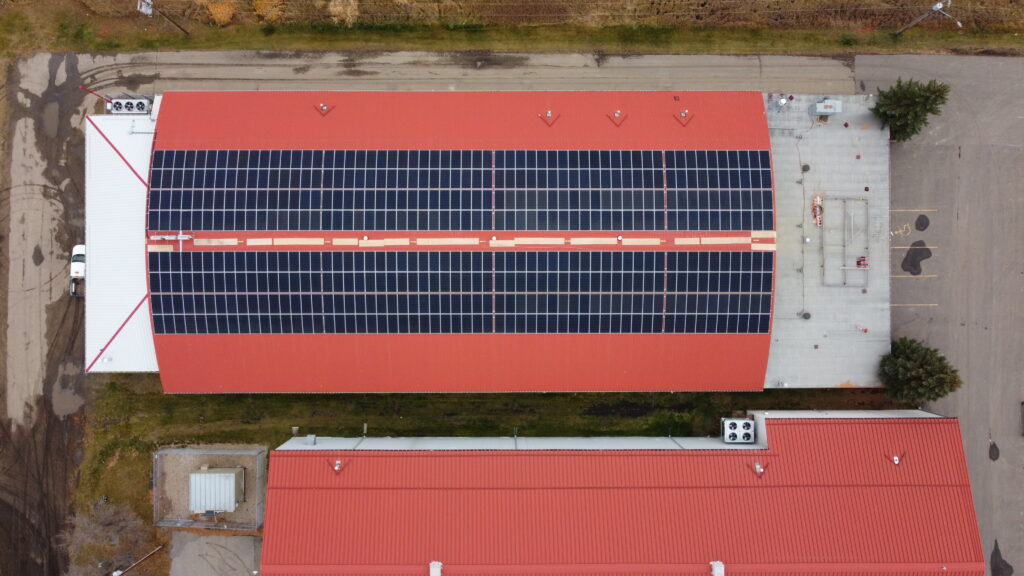2022Completion Year
185.6kWInstalled Capacity
$372,235.80Project Cost
$16,180.60Cost Savings
$157,760MCCAC Funding
13Simple Payback Period
161,806kWh/yearElectrical Energy Savings
92.23tonnes CO2e/yearGHG Reductions
Greenhouse gas emissions reductions for this project are calculated based on Alberta’s Carbon Offset Emission Factors Handbook Version 2.0
OVERVIEW
Almost 11,000 square-feet of solar panels are now on the roof of the Mike Karbonik Arena in the town of 2,000 southwest of Edmonton. During the fall of 2021, the Town of Calmar completed the installation of a new solar PV system at the Mike Karbonik Arena. The 464 panels are expected to generate about 98 per cent of the arena’s annual energy consumption. The new 185.6 kW solar PV installation is conservatively estimated to generate 161,806 kWh per year. The arena, which is used by Calmar residents and those in the surrounding communities, will use the power generated by the panels in the winter when there is the greatest need to power the rink and export energy to the grid in the summer when there is a surplus. The system allows the Town of Calmar to produce renewable energy, lower their carbon footprint, and lead by example in the community. The system received a rebate through the Municipal Climate Change Action Centre’s Alberta Municipal Solar Program for $157,760.
APPROACH
The project was completed in 8 months after initiation in the summer of 2021.
RESULTS
The entire solar array consists of 464 solar PV modules and has a maximum capacity of 185.6 kW DC. The system will offset about 92 tonnes of greenhouse gas emissions annually, the equivalent to 25 passenger vehicles driven for a year off the road. Calmar is in a partnership to provide recreational services to Leduc County residents as well. As such, the arena is one of the town’s largest energy expenditures. Council expects to save thousands a year for the panels’ lifespan of 25 years or more. In the summer, when the arena’s power draw is lower, the town will sell electricity generated by the solar panels back to the grid. A monitor will be set up in a common area so the public can see the array’s output levels in real time.
Fun Fact!
The 464 panels are expected to generate about 98 per cent of the arena’s annual energy consumption.


